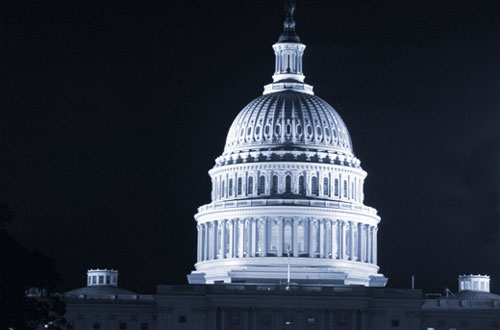All surface transportation reauthorization bill needs is President’s signature
Written by Mischa Wanek-Libman, editor
Both the House and Senate passed "Moving Ahead for Progress in the 21st Century," or MAP-21, on Friday, June 29. President Obama is expected to sign the legislation into law shortly.
MAP-21 is a two-year, $105 billion surface transportation reauthorization bill that will run through September 30, 2014 and replaces the current and nine-time extended SAFETEA-LU.
“This is a good, bipartisan bill that will create jobs, strengthen our transportation system and grow our economy,” said U.S. Transportation Secretary Ray LaHood. “It builds on our aggressive safety efforts, including our fight against distracted driving and our push to improve transit and motor carrier safety. The bill also provides states and communities with two years of steady funding to build the roads, bridges and transit systems they need. We look forward to working with Congress, states and local communities to put this bill to work quickly and effectively.”
“MAP21 provides for stable funding for public transportation for two years and will go through September 2014. This new bill will provide for a greater degree of certainty for public transit agencies and private sector businesses as they maintain, plan and implement public transportation projects,” said American Public Transportation Association President and CEO Michael Melaniphy in a prepared statement.
“In an important victory, the bill maintains funding at existing spending levels by transferring approximately $18.8 billion from the general fund to the Highway and Mass Transit Accounts of the Highway Trust Fund, offset by changes to public and private contribution requirements and transfers from the Leaking Underground Storage Tank trust fund. While not a six-year bill as previous surface transportation legislation has been, the bill does provide some certainty for state DOTs and transit agencies going forward, which should also spur some increased infrastructure investment activity. The bill also maintains approximately the historic 80-percent/20-percent funding split between highway and transit programs,” the National Railroad Construction and Maintenance Association said in a prepared statement.
The NRC’s analysis of the bill also listed several areas that will be beneficial to the rail sector, such as Section 130 Rail‐Highway Grade Crossing Program, which will be maintained with $220 million in annual dedicated funding, as well as the Projects of National & Regional Significance (PNRS) program has an authorized appropriation in FY13 of $500,000,000 for such projects (eligible applicants are state DOTs and transit agencies).
Additionally, the NRC found that the final bill makes a series of changes to environmental permitting and review laws designed to expedite project delivery.
“It establishes an initiative to develop and advance the use of best practices to accelerate project delivery and to select projects to test innovative project delivery techniques. It allows 100-percent federal funding for projects that use certain innovative project delivery methods. It maintains the vast majority of project acceleration provisions from S. 1813 and provisions from the House bill in addition to new provisions that will maintain substantive environment and public health protections, while streamlining the creation and use of documents and environmental reviews, enhancing efficiency and accountability in the project delivery process,” the NRC said in the statement.
The NRC analysis states the final bill expands and improves the Transportation Infrastructure Finance and Innovation Act (TIFIA) program by increasing funding for the program to $750,000,000 for FY13 and $1 billion in FY14, by increasing the maximum share of project costs from 33 percent to 49 percent, by allowing TIFIA to be used to support a related set of projects and by setting aside funding for projects in rural areas at more favorable terms.
Regarding truck size and weight, the final bill includes provisions for a two-year study on the effects of truck size and weight on highway safety and infrastructure and compilation of a list of existing state truck size and weight laws.
On the down side, the NRC stated an extension of the shortline tax credit, provisions for transit and parking commuter benefits and flexibility for state DOTs to utilize a portion of the National Freight Program and Transportation Mobility Program funds for freight rail or maritime projects were not included in MAP-21.
“While this new legislation is better than existing law is many ways, there is a significant amount of room for improvement moving forward, and the NRC intends to work with its members, other transportation stakeholders and Congress over the coming months and years to increase public and private investment in the nation’s critical transportation infrastructure,” said the NRC.





